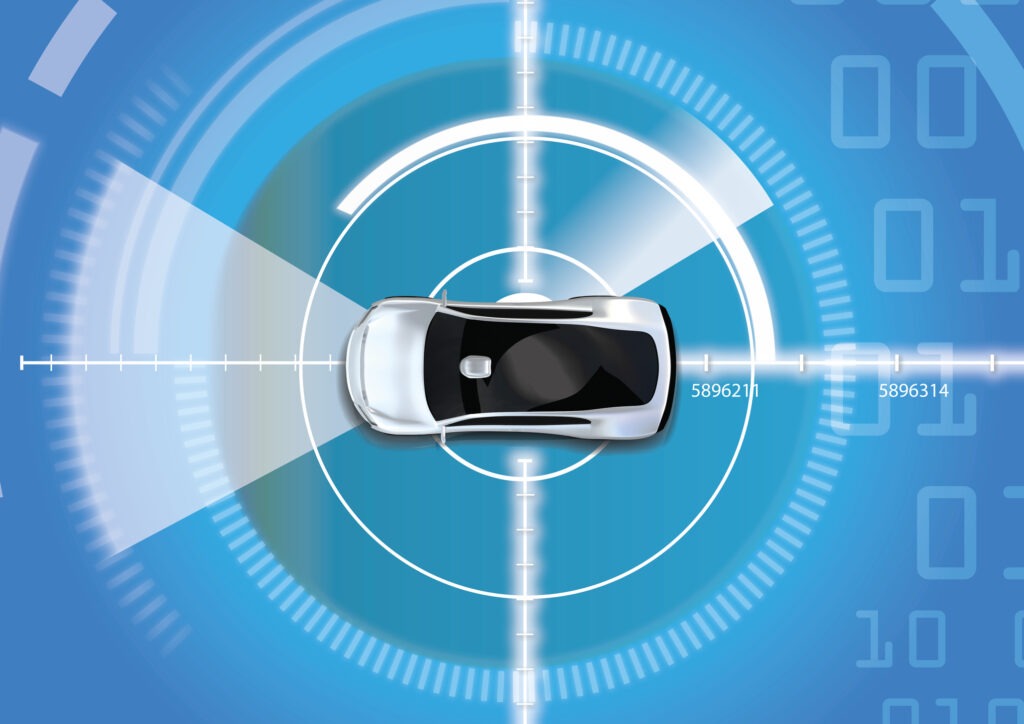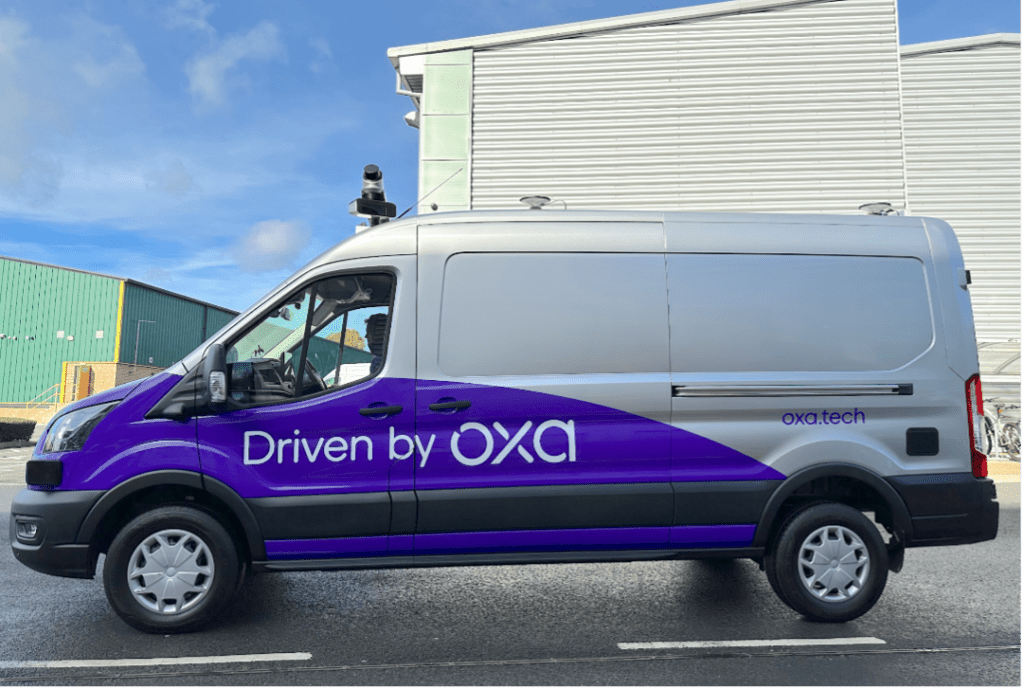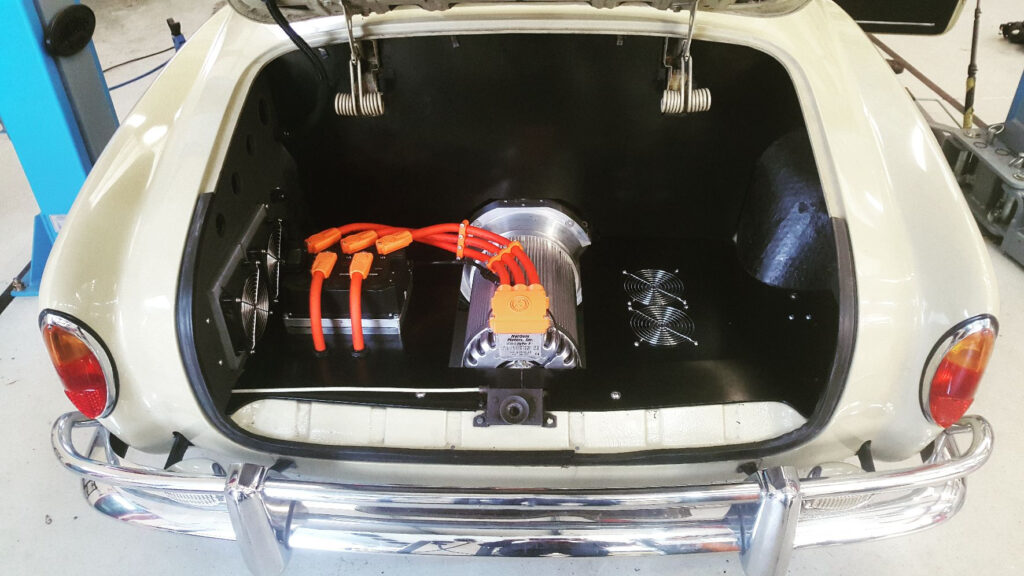What is the UK Automated Vehicles Bill and how will it affect the automotive industry?
22 November 2023

The Automated Vehicles Bill was announced by the UK Government at the start of November. It aims to improve safety, boost autonomous technology in the country, and clarify legal liability. Autovista24 journalist, Tom Hooker, considers the bill’s impact.
The UK Government is introducing a new legal framework for the safe operation of autonomous vehicles (AVs) in the UK. The Automated Vehicles Bill was announced in the King’s Speech and is currently going through processes of establishment in the country’s political system. The news came seven months after the UK became the first country in Europe to allow hands-free driving technology.
The bill looks to set the framework for three topics related to autonomous driving, the first of which is to maintain the country’s position as a global frontrunner when it comes to the technology. The second is to clarify any ambiguity surrounding liability in the event of an accident, and the third is to ensure that autonomous vehicles are safe once on the road.
As set out in the king’s speech, ‘only vehicles that can drive themselves safely and can follow all road traffic rules without the need for a human to monitor or control the vehicle to maintain that level of safety will be classified as self-driving and allowed on our roads.’
This would relate more closely to SAE Level 4 (L4) and L5, as defined by the global standard for autonomous technology. L3 requires occupiers of the vehicle to remain ready to take control at any moment. L0 to L2 may offer support for the driver including lane centring and steering support but are not classed as ‘self-driving’.
Funding injection
The government believes that by 2035, the self-driving market will generate up to £42 billion (€48 billion) and create up to 38,000 skilled jobs. This would follow the £475 million generated via direct investment and the 1,500 new jobs the sector created between 2018 and 2022.
A new report published by the Society of Motor Manufacturers and Traders (SMMT) suggests that Connected and Automated Mobility (CAM) will deliver £66 billion annually by 2040, providing 342,000 additional jobs for the economy, of which 12,250 of those in automotive manufacturing.
In September, the Centre for Connected and Autonomous Vehicles (CCAV) announced that £18.5 million in funding was being channelled into 13 UK-based self-driving projects. The funds contributed towards the development of AVs backed by Nissan, as well as specialised projects such as improved and affordable drive-by-wire systems to help automate vehicles.
The CCAV’s target is to improve the safety and security of AVs alongside performance, filling in specific technology gaps, and making sure the UK stays on top of self-driving development. In August 2022, the government also published its automated mobility plans for 2025.
‘We have the opportunity to put the UK at the forefront of a fast-growing, multi-billion-pound industry by providing the clarity and certainty for business to develop and invest in this exciting technology,’ said transport secretary Mark Harper.
Safety first
In 2021, 88% of all recorded collisions on roads in Great Britain involved human error. Research conducted by the Institute for Engineering and Technology suggests that for every 10,000 errors made by a human, a self-driving vehicle will make just one. So, taking people out of the equation could lead to a vast reduction in injuries and fatalities, while also lowering the associated legal and repair costs.
AVs will only be allowed onto UK roads if they can operate safely and follow all road traffic rules, without needing a human to monitor the road or take control. The Department for Transport (DfT) will be responsible for enforcing this. If manufacturers or autonomous technology providers fail to meet this standard, they could face fines, be forced to take corrective action, or even have their operations suspended.
To support self-driving technology, Traffic Regulation Orders (TROs) will be sent by local authorities to create a digitalised road network map. TROs would set speed limits, close roads, and designate parking spaces.
Legal liability
A major element of the Automated Vehicle Bill is legal liability. It makes companies, rather than individuals, responsible for a vehicle when it is self-driving. In situations where it does not make sense for a human to be liable, the person will be given immunity from any prosecution.
However, in vehicles where drivers assume a certain level of control, such as sections of hands-free driving on the motorway where the driver must remain attentive, the responsibility will remain on the human.
‘In the future, self-driving technology will change the way we insure our vehicles. It promises to be safer and should result in fewer collisions, which could in the longer term have a positive impact on premiums,’ commented Tara Foley, CEO of AXA in the UK and Ireland.
‘While it is too early to fully understand the changes, the legislation will clearly outline liability depending on the type of self-driving vehicle – whether there is a driver in charge or no driver in charge. This means that vehicle operators and manufacturers may own some insurance products. Liability will rest with the driver, the manufacturer or software provider, depending on which is deemed to be in control at the time of an accident,’ she explained.
‘As a large motor insurer, we have long been calling for this legislation to improve road safety. Introducing a regulatory framework for self-driving has huge potential to save lives. In addition, huge savings could be made on medical and ambulance services related to road crashes that cost the NHS £2.3 billion last year,’ Foley pointed out.
The bill also aims to protect people from false advertising and misleading marketing campaigns. This means an AV will only be labelled as ‘self-driving’ if it meets the safety requirements set out in the legislation. This will help buyers differentiate between different levels of autonomous driving technologies and be aware of what they are using.
‘It is critical that the regulations enable relevant data-sharing between the vehicle manufacturers and insurers in the interests of motorists and both industries,’ outlined Mervyn Skeet, ABI director of general insurance policy.
‘We also want to see clear definitions and distinctions between automated-driving technology and assisted-driving technology to support the public communications that will be required. It will be vital that people understand the capabilities of the vehicles they are driving and are able to use them safely,’ Skeet added.
Pothole problems
With its cool and wet climate, on top of high traffic volume, the UK could prove extremely challenging for self-driving vehicles. This is apparent in major cities where routes can experience extremely high use, the same areas where AVs could be regularly tested.
A major challenge posed by UK roads is potholes. Since it started collecting data in 2006, the RAC has dealt with the highest amount of pothole-related breakdowns in the third quarter of 2023. To tackle this issue, the government has set aside £5 billion until 2025.
However, the number of potholes filled in from 2022 to 2023 was 300,000 less than the previous year at 1.4 million. Analysis shows that drivers are 1.7 times more likely to suffer a breakdown due to continuous wear caused by potholes than they were 17 years ago.
‘While the concept of truly driverless vehicles being commonplace on our roads might still be a little sci-fi to the average driver, there is no doubting the need for this bill,’ said Simon Williams, head of policy at the RAC. ‘However, if we are ever to truly realise the benefits of autonomous technology we have to sort out the state of our roads once and for all,’ he added.
‘It is hard to fathom how driverless cars will be able to safely navigate our streets when so many road markings are faded, and then there is the prospect of vehicles getting needlessly damaged by the UK’s pothole plague as they surely will not be programmed to avoid them,’ Williams explained.
Aftermarket assistance
Vehicle and technology manufacturers will be responsible for ensuring AVs are safe to be used on public roads. However, it will be the automotive aftermarket that is tasked with keeping these vehicles operating to the best of their abilities.
ZF Aftermarket spoke to Autovista24 about these challenges. It clarified the need to ensure workshops and maintenance services are equipped with the right technology as well as the skills to adapt to tomorrow’s vehicles.
‘For the UK to fulfil its aspirations of becoming a tech powerhouse, it is imperative that emerging technologies are embraced, one of these being autonomous mobility,’ said Philipe Colpron head of ZF Aftermarket.
‘Though the ambition of having widespread adoption is exciting, it is vital to acknowledge that the transition to autonomous mobility will not occur overnight, as it will require, beyond technology readiness, and a full eco-system of services. It is good to see the government starting to plan ahead.
‘One crucial challenge we should ensure not to overlook is the importance of predictive and connected maintenance solutions for the autonomous vehicles. While they promise advancements in safety, efficiency and convenience, their success is intricately linked to diligent and preventive maintenance solutions.
‘There are currently over 42,000 repair and maintenance businesses across the UK,’ added Colpron ‘and we must ensure to bring them along, for example through training and workshop technology, so they can continue servicing the vehicles of today and tomorrow.’
Accurate data will be required to operate on AVs, something that was clarified by the European Court of Justice during a ruling between vehicle manufacturing group Stellantis and an independent garage chain in Italy. A pivotal legal precedent was set, affirming access to vehicle on-board diagnostics for independent maintenance, serving and repair companies.
Homegrown technology
The new bill will provide confidence to UK technology companies working in the sector, some of which have projects supported by the government fund of £18.5 million. The Transport Research Laboratory (TRL) is involved with three of these government-backed projects.
All of them are centred around a trial deployment of early commercial self-driving vehicles. They target areas that are currently experiencing technology gaps. TRL is also collaborating with other companies to provide operational in-use monitoring of AVs.
‘The point of this bill is not to accelerate the use of autonomy on our roads: it is to create the conditions where companies can develop, build and sell them (thus supporting the economy). This is a big one for the auto industry,’ commented Paul Campion, CEO of TRL.
At the forefront
Oxa is one of the companies at the forefront of the UK’s AV revolution and was the first in the region to test self-driving vehicles on public roads in 2016. This progress has continued, and last year the company conducted the first zero-occupancy autonomous vehicle journey on publicly accessible roads in Europe.

‘The new Automated Vehicles Bill will lead to a comprehensive regulatory framework creating a new class of driver, the first in 100 years,’ stated Professor Paul Newman, president, CTO and co-founder at Oxa.
‘It delivers a clear partitioning of responsibilities and accountabilities for all businesses and actors that must come together to enable self-driving vehicles at scale. This is a highly positive step and has taken a vast amount of smart thinking from across the UK, including DfT, the Centre for Connected and Autonomous Vehicles and industry.’
‘Self-driving vehicles are a great example of AI delivering strong societal, net-zero, economic and industrial benefits, enhancing the UK automotive industry and according to the UK Government creating tens of thousands of new skills jobs.
‘They will help our cities to evolve with new transport modes, forms of vehicle ownership and emissions expectations. Regulations are likely to be delivered in 2025, matching our roadmap for when commercial Oxa-driven autonomous vehicles will be on the road in the UK,’ Newman added.

Wayve Technologies is working on DriveSafeAI, a safety assurance framework for the activation of AI in self-driving technology, which has received £1.9 million in government funding. The company has been working on deep learning and AI-targeted technology for autonomous driving since 2017.
Alex Kendall, co-founder and CEO of Wayve, said the ‘announcement that the government will bring forward legislation for self-driving, signals to the global self-driving industry that the UK Government is committed to fostering innovation for the future of transport.’
‘By setting out a clear path to commercialisation, new primary legislation for self-driving vehicles gives us the confidence to continue investing in research and development and growing our talent base here in the UK,’ Kendall added.
Another project benefitting from backing – with a £910,000 injection – is Driven by Sound, by Calyo. The company is working on a robust navigation system for automated vehicles that can hold its own in adverse weather conditions, while still being affordable.
‘The Automated Vehicles Bill marks a pivotal moment in the evolution of autonomous mobility in the UK. It reflects a collective commitment to safety, innovation, and the responsible growth of the industry,’ said Dr Mihai Caleap, founder and CEO of Calyo.
‘The provisions outlined in the bill, from setting thresholds for self-driving vehicles to creating safety requirements for deploying them, reflect a forward-thinking approach to shaping the industry. It paves the way for responsible development and deployment of autonomous technologies, ensuring that they meet rigorous safety standards. This is a crucial step towards building trust in the capabilities of autonomous vehicles and solidifying their place in our transportation ecosystem,’ Caleap added.
Ohmio is another technology firm operating in the UK and is one of the partners in the £1.8 million funded StreetCAV project. It is creating roadside connectivity solutions for self-driving shuttles as well as other services for robotic drones.
‘Safety is at the forefront of our work and we are committed to help in reducing road collisions, a great majority of which are caused by human error,’ said Dean Zabrieszach, CEO of Ohmio.
Global advancements
The UK is already home to some ‘hands off’ driving technologies. This includes Ford BlueCruise which is available in the UK and Germany, operating on select motorways or ‘blue zones’. There is also Tesla’s ‘Autopilot’, a range of driver-assistance features ranging from traffic-aware cruise control to ‘Autosteer’.
BMW recently announced it would be offering an SAE L3 feature through its Personal Pilot system in Germany. It allows drivers to take their hands off the wheel and eyes off the road when using the system up to 60kph (37mph). Mercedes-Benz also began providing an L4 driverless valet parking to customers at Stuttgart airport in Germany.
Volkswagen Group is still developing its autonomous shuttle, Moia, in Germany and the US. It aims to introduce regular operations by 2026. NTT is also planning to test driverless vehicle technology with Toyota. Self-driving vehicles could also be seen in assembly lines, as Lexus said its next generation of electric cars will drive around the factory independently.



